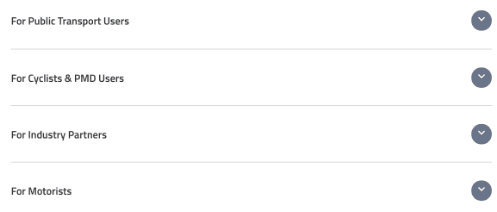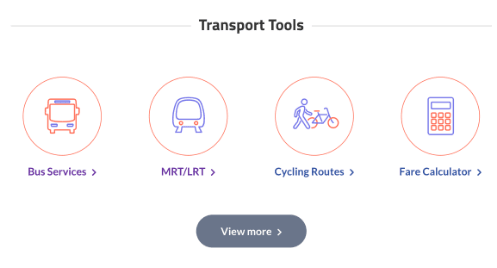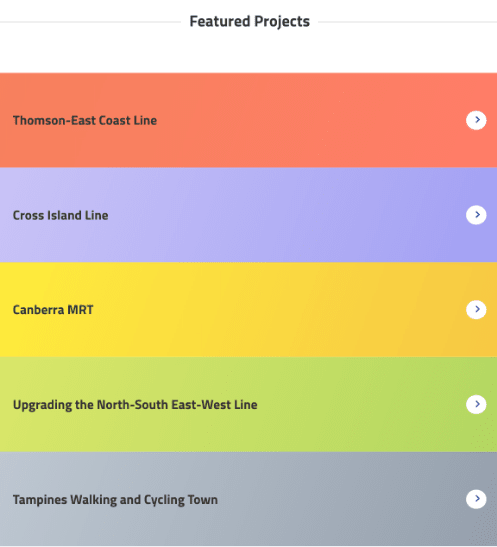Besides the rail and bus network that forms part of our extensive public transport infrastructure, our roads too are also optimised for those travelling via car. And if you are going places – whether driving or via taxi or hired car – chances are that you will use one of the 10 expressways that span the island. With no traffic lights or traffic junctions, these wide, dual carriageways connect people to homes, schools and offices faster and more seamlessly. They typically have three or more lanes in each direction and some run partially underground or even under water for faster, shorter and more more connected journeys. All open expressways in Singapore have a maximum speed limit of 90km/h, and between 70km/h and 80km/h in expressway tunnels. Motorists should observe speed limits when driving and follow expressway and tunnel safety precautions. Motorists are advised to go to Road Tunnel Operations and Safety to find out more about good practices in road tunnels.
Expressways
What’s in a Name?
Our expressways are commonly known by their acronyms, which are derived from the first letter of the first two syllables followed by the first letter of the last word.
- Ayer Rajah Expressway (AYE)
- Bukit Timah Expressway (BKE)
- Central Expressway (CTE)
- East Coast Parkway (ECP)
- Kranji Expressway (KJE)
- Pan Island Expressway (PIE)
The exceptions are the Kallang-Paya Lebar Expressway (KPE) and the Marina Coastal Expressway (MCE). The KPE was originally intended as two separate expressways in Kallang and Paya Lebar, and because of this, the first two letters of each area are used for its acronym. As for the MCE, it is abbreviated to highlight the road’s coastal geography.
Engineering Marvels
Every expressway construction is a unique mega project. In almost all instances, they are a feat of planning and logistics, and require extensive planning and the re-alignment and acquisition of roads. Besides this, there are numerous engineering challenges, from difficult soil conditions to working in built-up areas.
Highlighting some of these challenges is the MCE, one of Singapore’s most ambitious road projects.
- As massive as the project was, it had to ensure minimal disruption to the Central Business District that was in close proximity to extensive excavating
- Maintaining ground stability was a critical but complicated as the work passed through large swathes of reclaimed land, marine soil and under the sea floor
- Special measures and techniques were used as engineers dug to depths of 60m in marine clay that had the consistency of toothpaste and peanut butter
- More than 3 million cubic metres of earth – enough to fill 1,200 Olympic swimming pools – was excavated during its construction
- An additional 13.1 hectares of land (the size of 12 football fields) had to be reclaimed at Marina Wharf and Marina East to create new land space for constructing the expressway
The 20m tunnel under the seabed was done in stages to avoid causing water from the Marina Barrage reservoir to flow into the sea and affecting the safety of small crafts and vessels on the Marina Bay. And engineers had the added complexity of accounting for tidal conditions as well - Precision, safety and accuracy were paramount as the parts of the MCE tunnel runs underground close to an MRT line
|
|

















